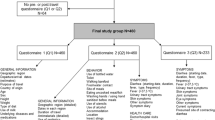Summary
Travel exposes an individual in unfamiliar environments. Those planning to travel should schedule an appointment with their treating physician, at least a month in advance of their trip for an updated assessment of glycemic control, and should also procure a prescription describing the patient’s medical condition, and medication. A diabetic individual should also carry extra amount of medicines which are distributed properly. Information regarding the climate and environmental conditions of the destination is a must. Extremes of weather can adversely affect the health of the patient and/or degrade medications, supplies, and equipment. Patients with diabetes are more susceptible to environmental stressors than their counterparts, such as increase incidence of heat exhaustion, cold exposure, or foot ulcers. Food options for diabetics may be limited during travel and travel planning should offer greater flexibility in dietary choices. Packing healthy snacks in carry-on luggage can take care of disrupted dietary patterns. Insulin concentration varies in various countries, and hence, the use of the correct syringes is essential. Unit of blood glucose measurement may also be different. Availability of medications may also be an issue. So, it is important to carry a list of all medications with generic name and their dosages. Immunization against common and travel-related vaccine-preventable diseases is recommended. Those on insulin pump therapy should get in touch with the manufacturing company and it is advisable to disconnect the pump during takeoff or landing as change in cabin pressure may lead to excess insulin delivery. Individuals with diabetes should also carry travel health insurance. One must carry physician prescription, health insurance policy, medications and prescriptions for them, rescue medications, snacks, supplies, glucometers, coolants, pumps in double, first aid kit, comfortable shoes, and protective clothing. Airport security requiring patients on pump or continuous glucose monitor (CGM) to go through scanners should be warned from doing so as it may cause radiation-induced malfunction. These devices should not be removed also. Air travel requires patients to carry carbohydrate snacks, insulin, insulin pump, and medications in carry-on baggages to maintain temperature stability. Due to pressure differences in the cabin area, there might be some irregularities in insulin administration. Even in insulin pumps, similar issues may arise due to bubbles precipitating out of insulin solution in the microtubules. Blood sugars must be frequently checked. Traveling across less than five time zones does not require insulin dose adjustments, but in greater than five time zones, dose and timings need to be adjusted. Those with diabetes are at an increased risk of developing deep venous thrombosis, so they should be encouraged to stand and walk during long flights every 1–2 h and perform seated dorsiflexion/ plantarflexion exercises to avoid venous stasis; also, one must remain well hydrated. Train travel is much more flexible; though health insurance is not required, one must pack the same essentials in carry-on bags. During travel, there will be an inadvertent increase in walking, for which insulin requirement will decrease, and frequent snacking may also help. Blood sugar must be measured more frequently. One must wear proper footwear to avoid ulcers and infections. One must be properly hydrated and must also avoid diarrhea.
Similar content being viewed by others
References
Nasser AA, Cook CB, Edelman S. Diabetes management during travel. Diabetes Manage. 2012;2(3):205–12. https://doi.org/10.2217/dmt.12.23.
Burnett JC. Long- and short-haul travel by air: issues for people with diabetes on insulin. J Travel Med. 2006;13(5):255–60. https://doi.org/10.1111/j.1708-8305.2006.00057.x.
Dewey CM, Riley WJ. Have diabetes, will travel. Postgrad Med 1999;105(2): 111–113, 117–118, 124–126, 126, DOI: https://doi.org/10.3810/pgm.1999.02.538.
Lumber T, Strainic PA. Have insulin, will travel. Planning ahead will make traveling with insulin smooth sailing. Diabetes Forecast. 2005;58(8):50–4.
Westphal SA, Childs RD, Seifert KM, et al. Managing diabetes in the heat: potential issues and concerns. Endocr Pract. 2010;16(3):506–11. https://doi.org/10.4158/EP09344.RA.
Cook CB, Wellik KE, Fowke M. Geoenvironmental diabetology. J Diabetes Sci Technol. 2011;5(4):834–42. https://doi.org/10.1177/193229681100500402.
Garofano C. Travel tips for the peripatetic diabetic. Nursing. 1977;7(8):44–6. https://doi.org/10.1097/00152193-197708000-00015.
Hieronymus L, Hepner A. Eating well while traveling. Diabetes Self Manag. 2011;28(3):48–52.
Pape J. Lower-carb options. Diabetes Health. 2004;13(6):34.
Dunning D. Safe travel tips for the diabetic patient. RN. 1989;52(4):51–5.
Westphal SA, Nassar AA, Childs RD, et al. Diabetes self-management in the heat. Pract Diabetol. 2011:21–5.
http://www.mynewsdesk.com/in/pressreleases/clinicare-india-launches-frio-r-insulin-wallet-an-effective-travel-storage-solution-designed-to-keep-insulin-cool-997356. Last accessed on 29th March, 2017
Casey P. Preparing our patients for travel. Pract Diabetol. 2011;30(4):26–8.
King B, Goss P, Paterson M, Crock P, Anderson D. Changes in altitude cause unintended insulin delivery from insulin pumps. Diabetes Care. 2011;34(9):1932–3. https://doi.org/10.2337/dc11-0139.
Hirsch I. Hitting the dartboard from 40,000 feet. Diabetes Techonol Ther. 2011;13(10):1–2.
Chelminska K, Jaremin B. Travelling diabetics. Int Marit Health. 2002;53(1–4):67–76.
Chandran M, Edelman SV. Have insulin will fly: diabetes management during air travel and time zone adjustment strategies. Clin Diabetes. 2003;21(2):82–5. https://doi.org/10.2337/diaclin.21.2.82.
Aerospace Medical Association Medical Guidelines Task Force. Medical guidelines for airline travel, 2nd edition. Aviat Space Environ Med. 2002;74(5):A1–A19.
Ageno W, Becattini C, Brighton T, Selby R, Kamphuisen PW. Cardiovascular risk factors and venous thromboembolism: a meta analysis. Circulation. 2008;117(1):93–102. https://doi.org/10.1161/CIRCULATIONAHA.107.709204.
Gustaitis J. Taking to the air with diabetes. Diabetes Self Manag. 2002;19(3):36–7.
Mirsky S. Vacationing with diabetes, not from diabetes. IMS Ind Med Surg. 1972;41(2):28–30.
Cradock S. The traveller with diabetes: answers to common queries. Commun Nurse. 1997;3(4):28–30.
Hernandez C. Traveling with diabetes. Diabetes Self Manag. 2003;20(6):120–3.
Author information
Authors and Affiliations
Corresponding author
Rights and permissions
About this article
Cite this article
Ghosh, S., Bajaj, S., Chatterjee, P. et al. Diabetes and travel. Int J Diabetes Dev Ctries 38, 4–10 (2018). https://doi.org/10.1007/s13410-018-0605-6
Published:
Issue Date:
DOI: https://doi.org/10.1007/s13410-018-0605-6




